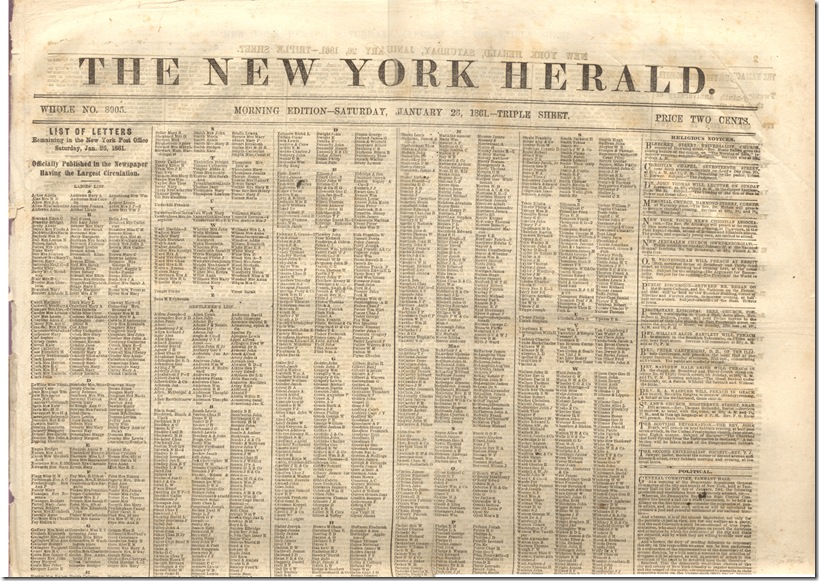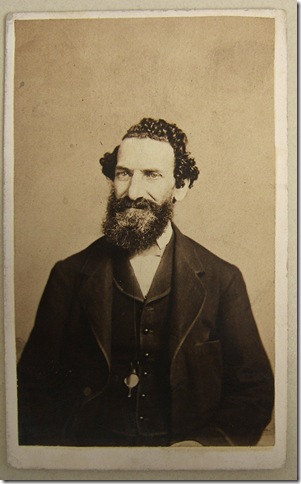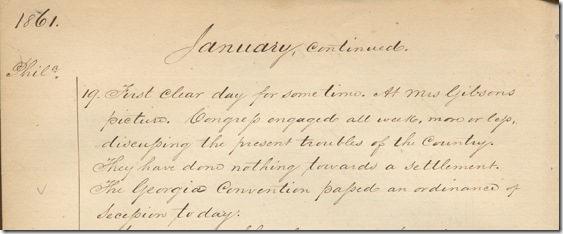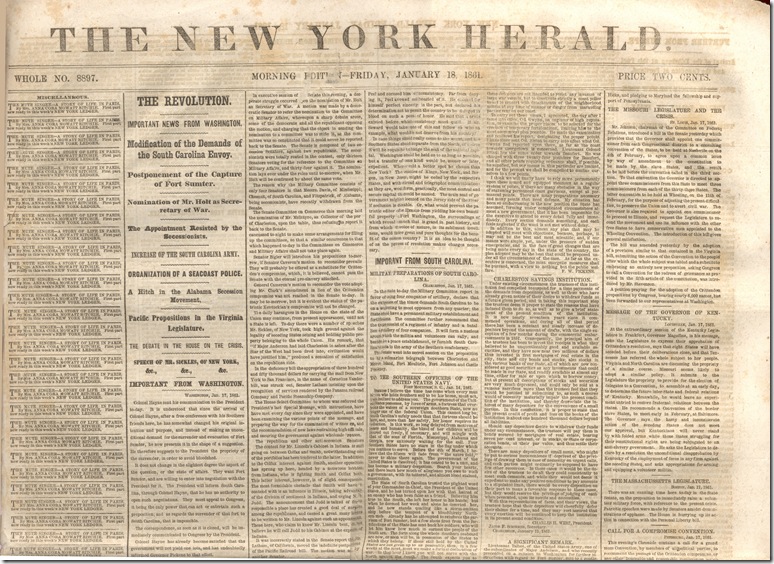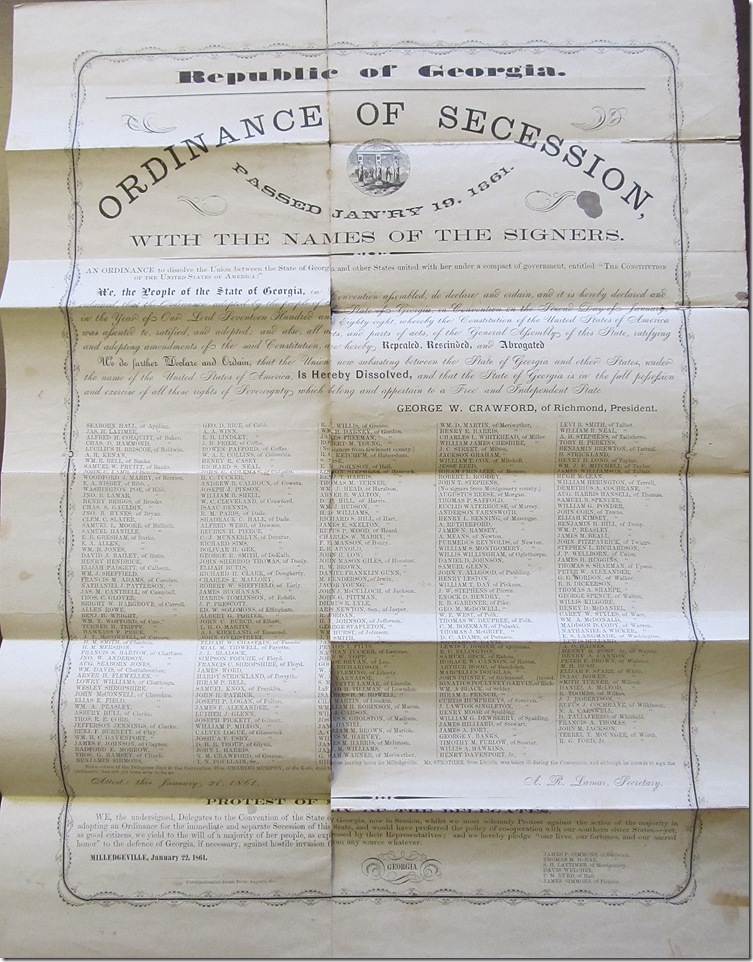
Transcript:
Republic of Georgia
ORDINANCE OF SECESSION
PASSED JANUARY 19, 1861
WITH THE NAMES OF THE SIGNERS
AN ORDINANCE to dissolve the Union between the State of Georgia and other States united with her under a compact of government entitled “ THE CONSTITUTION OF THE UNIED STATES OF AMERICA”
We, the People of the States of Georgia in Convention assembled, do declare and ordain, and it is hereby declared and ordained, that the Ordinance adopted by the people of the State of Georgia, in Convention on the Second Day of January. was assented to, ratified, and adopted: and also, all acts and parts of acts, of the General Assembly of this State, ratifying and adopting of the said Constitution and hereby Repealed, Rescinded, and Abrogated
We do further Declare and Ordain, that the Union, now subsisting between the States of Georgia and other States, under the name of the United States of America is Hereby Dissolved, and that the State of Georgia is in the full possession and exercise of all these rights of Sovereignty which belong and appertain to a Free and Independent state.
GEORGE W. CRAWFORD, of Richmond President.
[…]
PROTEST OF SIX OF THE THE DELEGATES
WE, the undersigned to the Convention of the State of Georgia, now in session, while we more solemnly Protest against the majority in adopting an Ordinance for the immediate and separate Secession of this state, and would have preferred the policy of co-operation with out southern sister States—yet as good citizens, we yield to the will of a majority of her people as expressed by their Representatives, and we hereby pledge “our lives, our fortunes, and our sacred honor” to the defence of Georgia, if necessary, against hostile invasion from any source whatever..
[…]
MILLEDGEVILLE, January 22, 1861
Citation: Republic of Georgia, Ordinance of Secession. 1861. A 861r

